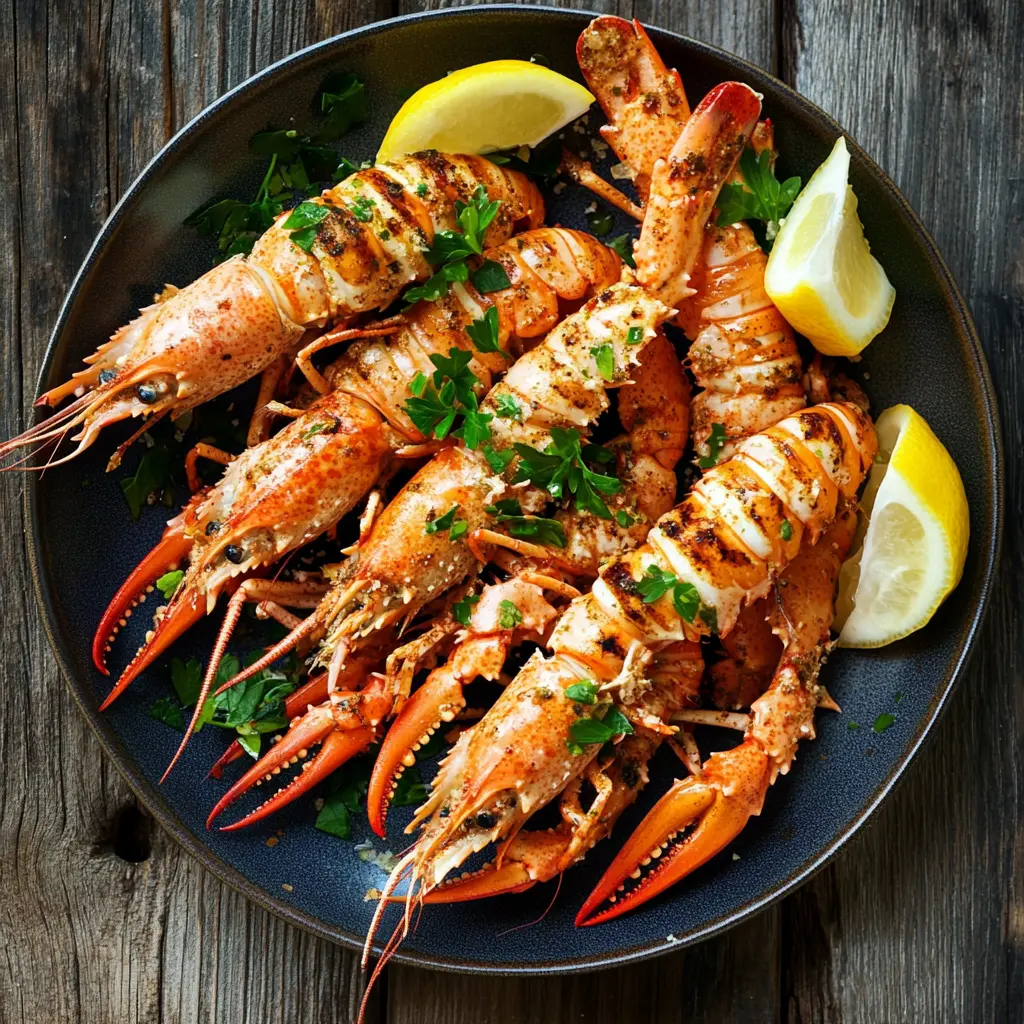Introduction
Langoustine, often referred to as Norway lobster, is a prized seafood delicacy cherished for its sweet flavor and tender meat. This elegant crustacean, with its delicate texture and sophisticated appeal, is a favorite among chefs and seafood enthusiasts worldwide. langoustine live in the cold waters of the North Atlantic and the Mediterranean, langoustines are smaller than lobsters but pack a flavor that’s just as luxurious.https://royalesrecipes.com/langoustine-recipe-a-culinary-delight-for-seafood-lovers/
In this guide, we’ll explore everything you need to know about langoustines: what they are, where they come from, their unique flavor profile, and how they’re prepared. Whether you’re a seasoned foodie or new to the world of seafood, this article will give you a comprehensive understanding of why langoustines are such a sought-after delicacy.
What is Langoustine?
Langoustines (Nephrops norvegicus), scampi or Norway lobsters, are a type of small, slender lobster. Despite their name, they are not lobsters in the traditional sense but belong to the same family of crustaceans. Langoustines are characterized by their long, thin claws, bright orange-pink shells, and sweet, delicate flavor.
Key Characteristics of Langoustines:
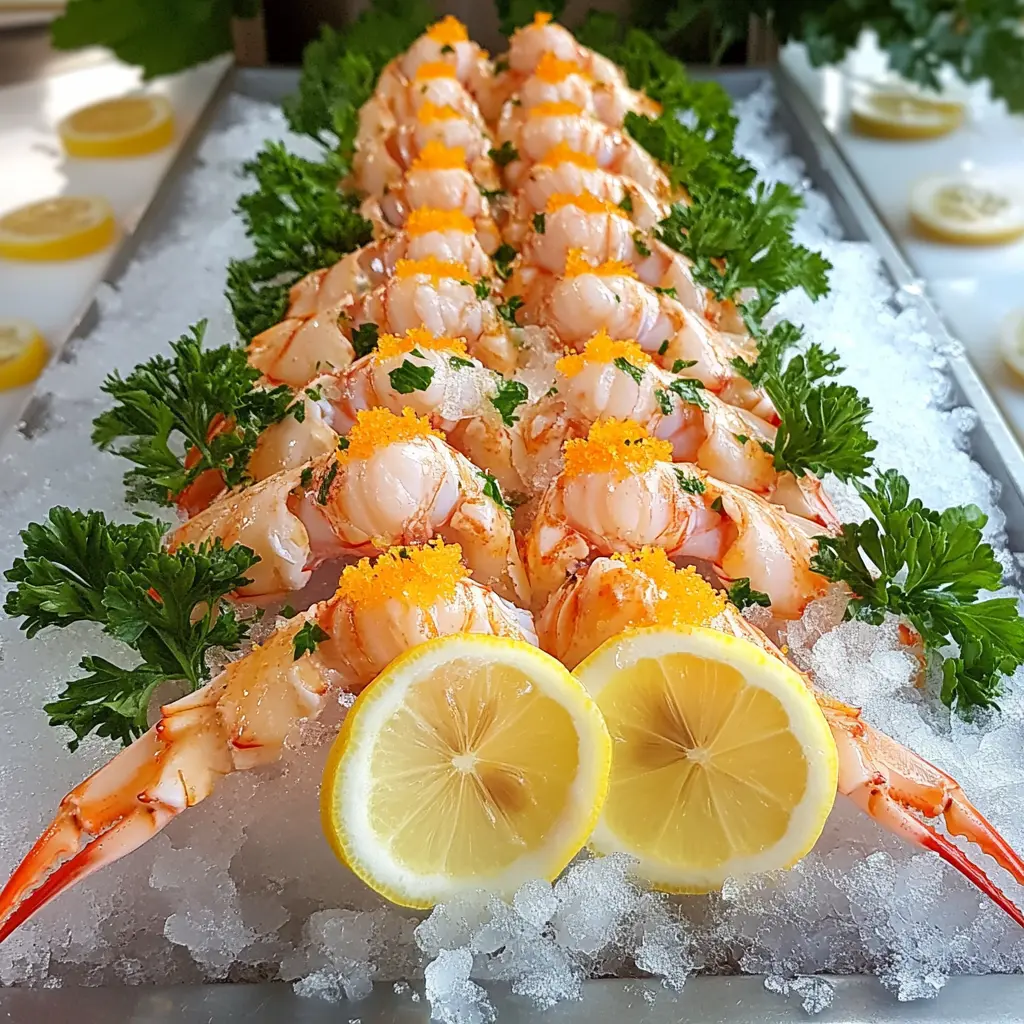
Langoustines are a standout delicacy in the seafood world, admired for their elegant appearance, delicate texture, and sweet flavor. Understanding their defining characteristics can help you appreciate what makes them such a prized ingredient. Here’s a closer look at the key traits of langoustines:
1. Size and Appearance ” What is langoustine “
- Size: Langoustines are smaller than traditional lobsters, typically measuring between 6 and 10 inches in length. Their size makes them perfect for individual servings or incorporation into dishes like pastas and risottos.
- Claws: They have long, slender claws that are less robust than those of lobsters but contribute to their graceful, elongated look.
- Shell Color: Their vibrant orange-pink shells are visually striking and become even brighter when cooked, making them a beautiful addition to any plate.
2. Sweet and Subtle Flavor ” What is langoustine “
- Natural Sweetness: Langoustines have a naturally sweet and mild flavor that sets them apart from other crustaceans like prawns or shrimp.
- Refined Taste: Their flavor is often compared to a cross between lobster and shrimp but with a more delicate, sophisticated profile.
- Versatility: This subtle taste allows them to pair well with simple ingredients like olive oil, garlic, and lemon, or with complex sauces and spices.
3. Tender and Juicy Texture ” What is langoustine “
- Delicate Meat: Langoustines have tender, melt-in-your-mouth meat, particularly in the tail, which is the most commonly eaten part.
- Juiciness: When you cooke langoustines correctly, their meat remains succulent and moist, making them a luxurious ingredient for a wide range of dishes.
- Unique Consistency: Unlike other shellfish, langoustines don’t become rubbery easily, which adds to their appeal as a premium seafood choice.
4. Unique Anatomy ” What is langoustine “
- Long, Thin Body: Langoustines have a slender, elongated body, making them visually distinct from both lobsters and prawns.
- Delicate Shell: Their shells are thinner and more fragile than lobster shells, which makes them easier to crack open and prepare.
- Edible Parts: While the tail is the most sought-after part, the claws and heads are often used to make rich stocks and sauces due to their intense flavor.
5. Habitat and Origin ” What is langoustine “
- Cold-Water Species: Langoustines thrive in the cold, deep waters of the North Atlantic and Mediterranean seas. They are particularly abundant in regions like Scotland, Ireland, Norway, and Iceland.
- Seabed Dwellers: They live in burrows on the seabed, often in sandy or muddy areas, where they dig and hide for protection.
- Sustainable Harvesting: Langoustines are caught using selective trawling methods, with many fisheries practicing sustainable harvesting to ensure healthy populations.
6. Culinary and Visual Appeal ” What is langoustine “
- Gourmet Status: Their elegant appearance and gourmet flavor make them a favorite in high-end restaurants and a show-stopping ingredient for special occasions.
- Bright Shell Color: The vibrant orange-pink shell adds visual appeal to any dish, whether served whole, split lengthwise, or as peeled tails.
- Plating Potential: Their claws and shells are often used decoratively, enhancing the presentation of dishes for a sophisticated dining experience.
Langoustines are a seafood lover’s dream, combining aesthetic beauty, tender texture, and a uniquely sweet flavor. These characteristics make them a versatile and luxurious choice for any meal, whether you’re preparing a simple grilled dish or an elaborate seafood feast.
Where Do Langoustines Come From? ” What is langoustine “
Langoustines thrive in cold, deep waters, primarily in the North Atlantic Ocean and parts of the Mediterranean Sea. The largest producers of langoustines include Scotland, Ireland, Norway, and Iceland, where they are often caught using sustainable trawling methods.
Habitat:
- Langoustines live in burrows on the seabed, typically at depths ranging from 60 to 400 meters.
- They prefer sandy or muddy substrates, where they can dig and retreat for protection.
Why Are Langoustines So Popular? ” What is langoustine “
Langoustines are celebrated for their exceptional flavor, versatility, and elegance. Here’s why they stand out:
1. Unique Flavor Profile
- Langoustines have a naturally sweet, subtle taste that sets them apart from other seafood.
- Their delicate flavor pairs beautifully with simple ingredients like olive oil, garlic, and lemon, as well as complex sauces.
2. Culinary Versatility
- Langoustines can be prepared using various methods, including grilling, boiling, sautéing, or steaming.
- They’re a key ingredient in many traditional dishes, such as Italian scampi alla griglia, French bouillabaisse, and Spanish paella.
3. Gourmet Appeal
- Langoustines are often featured in high-end restaurants due to their luxurious flavor and visual appeal.
- Their bright orange-pink shells and delicate claws make them a show-stopping centerpiece for any meal.
How Are Langoustines Different from Lobsters and Prawns? ” What is langoustine “
While langoustines share similarities with lobsters and prawns, they have distinct differences:
1. Compared to Lobsters:
- Size: Langoustines are much smaller.
- Flavor: Langoustines have a sweeter, more delicate flavor than the robust taste of lobsters.
- Claws: Langoustines have long, slender claws, while lobsters have larger, meaty claws.
2. Compared to Prawns:
- Texture: Langoustine meat is more tender and less firm than prawns.
- Flavor: Langoustines are sweeter and milder, with a flavor closer to lobster.
How to Cook and Enjoy Langoustines ” What is langoustine “
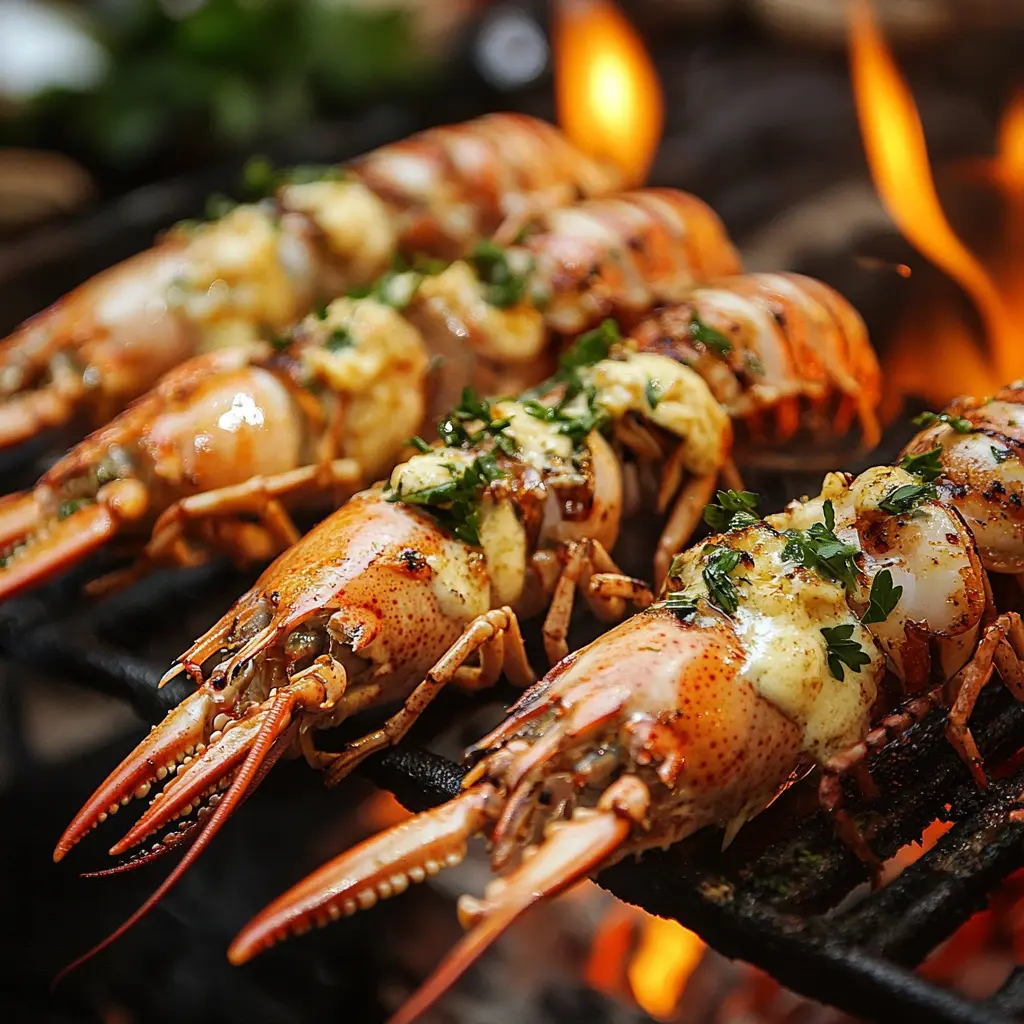
Langoustines are incredibly versatile and can be cooked in various ways to suit different dishes. Here are some popular methods:https://websiteseochecker.com/bulk-check-page-authority/#arearesult
1. Grilling
- Split langoustines in half lengthwise and grill them with garlic butter for a smoky, savory flavor.
2. Boiling
- Boil whole langoustines in salted water for 2–3 minutes, then serve with a squeeze of lemon.
3. Sautéing
- Sauté langoustine tails with olive oil, garlic, and herbs for a quick and flavorful dish.
4. Steaming
- Steam langoustines to preserve their natural sweetness and delicate texture.
Nutritional Benefits of Langoustines ” What is langoustine “
Langoustines are not only delicious but also nutritious. They are a healthy seafood choice, rich in essential nutrients:
- High in Protein: Supports muscle growth and repair.
- Low in Fat: A lean option for those watching their fat intake.
- Rich in Omega-3 Fatty Acids: Promotes heart and brain health.
- Packed with Vitamins and Minerals: A good source of vitamin B12, iodine, and selenium.
Interesting Facts About Langoustines ” What is langoustine “
Langoustines are not just another seafood option; they’re a fascinating crustacean with unique traits and a rich history in culinary traditions. Here are some interesting facts that highlight what makes langoustines so special:
1. They’re Known by Many Names
Langoustines go by several names, depending on the region and culinary tradition. People often call them Norway lobsters because they thrive in the cold waters of the North Atlantic. Italians refer to them as scampi, which has become synonymous with dishes featuring these crustaceans. In Ireland, locals commonly name them Dublin Bay prawns, even though they are not true prawns. These varied names highlight their global culinary appeal and versatility.
2. They’re a Culinary Treasure
- Langoustines are a gourmet delicacy, often found on the menus of high-end restaurants around the world.
- Their sweet, delicate flavor makes them a preferred choice for chefs, who use them in everything from elegant appetizers to luxurious mains like langoustine risotto.
- Despite their gourmet appeal, they’re surprisingly easy to cook at home, requiring minimal preparation to highlight their natural flavor.
3. Their Shells Are Packed with Flavor
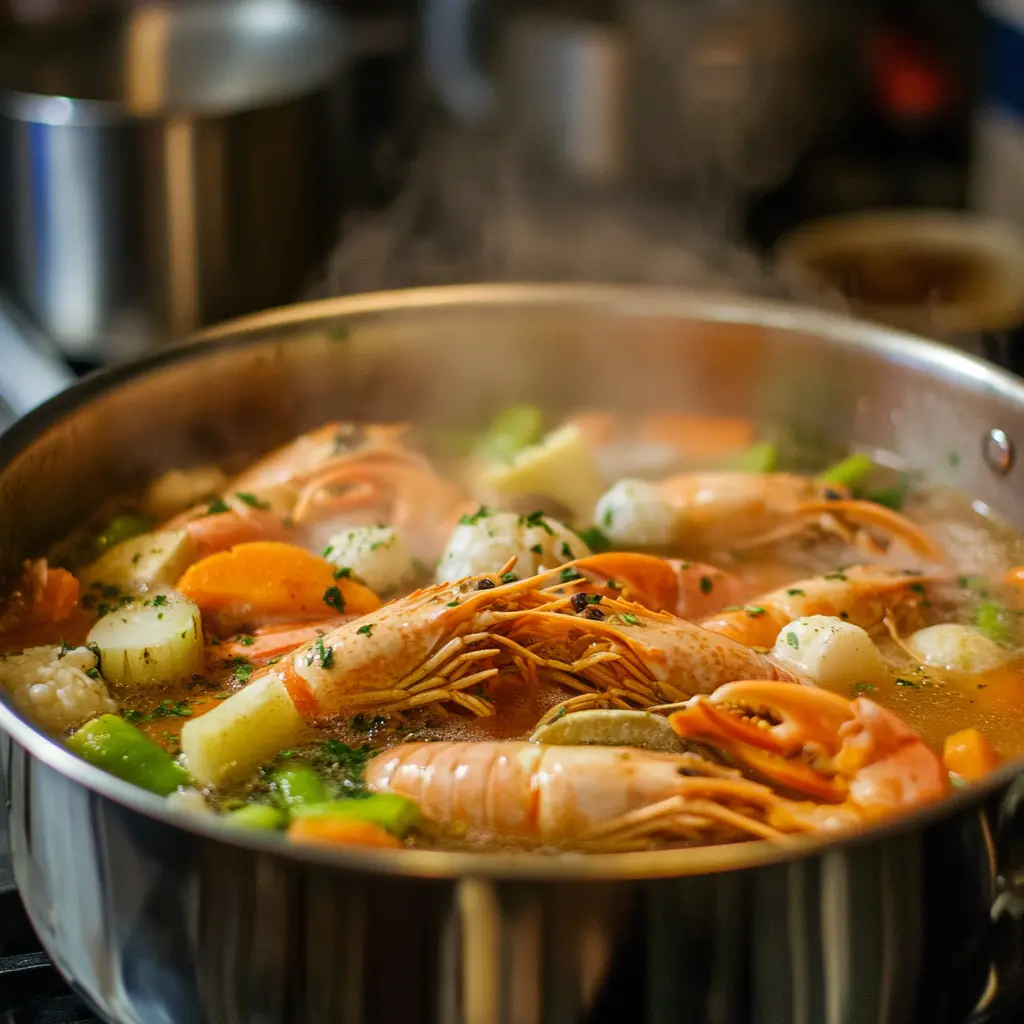
Chefs prize the shells and heads of langoustines for their ability to add depth to dishes, even though most people focus on eating the tail meat. Many cooks use langoustine shells to create rich seafood stocks, bisques, and sauces. These shells bring out an intense, savory flavor that enhances and elevates a wide variety of recipes.
4. They’re a Cold-Water Species
- Langoustines thrive in cold, deep waters, particularly in regions like Scotland, Ireland, Norway, and Iceland.
- They live on the seabed at depths of 60 to 400 meters, where they dig burrows in sandy or muddy substrates to hide from predators.
5. They’re Surprisingly Seasonal
- Although we can find langoustines in the year-round, their peak harvesting season is typically between May and September. During this time, their quality is at its best, making them even more sought after by seafood enthusiasts.
6. They’re Not Actually Lobsters
- Despite Norway people called langoustines as lobsters, these are not true lobsters.
- They’re more closely related to shrimp and prawns but have a distinct anatomy and flavor profile that sets them apart.
7. Sustainability is Key
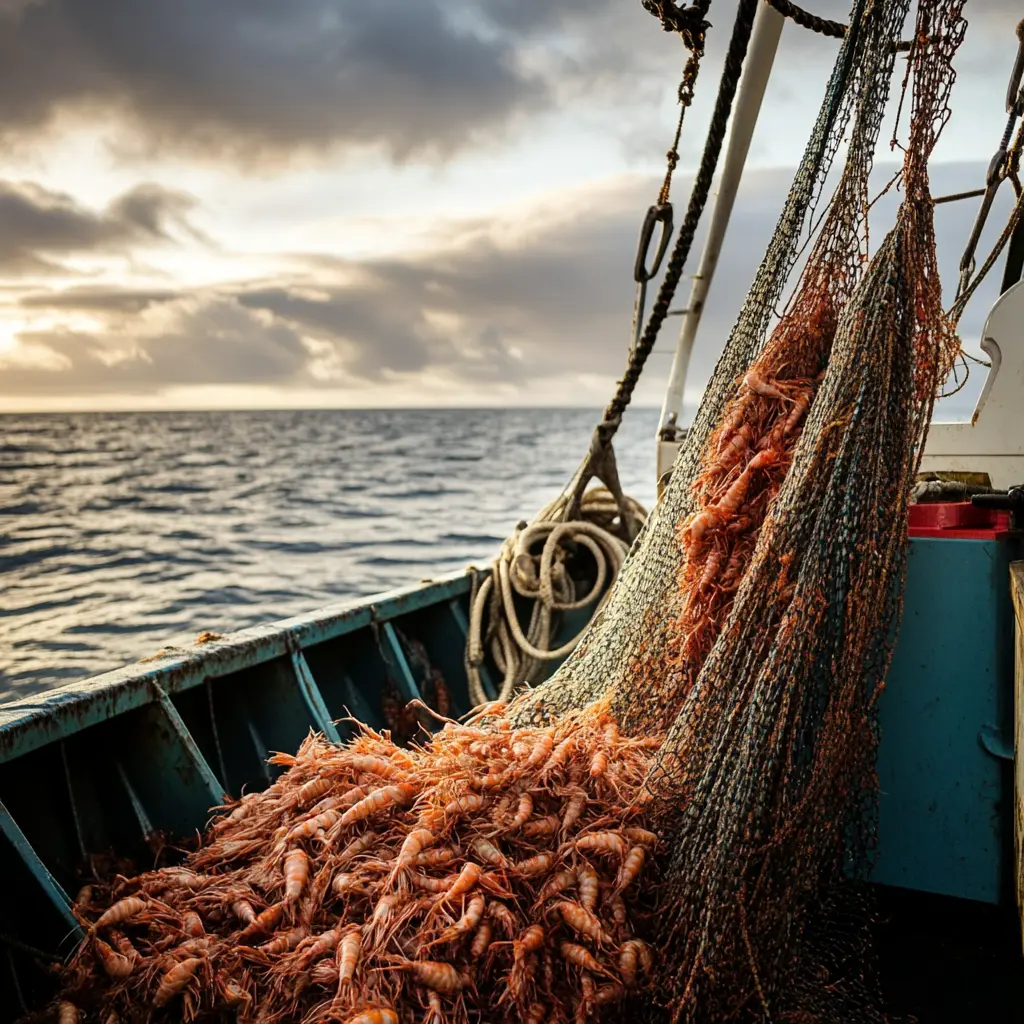
- Fishermen catch langoustines using selective trawling methods, which minimize bycatch and protect marine ecosystems.
- Many fisheries adhere to sustainable practices, ensuring that langoustines remain an environmentally friendly seafood choice.
8. They’re a Feast for the Eyes
- Langoustines have a striking appearance, with slender, elongated bodies, long claws, and bright orange-pink shells.
- When cooked, their shells take on an even more vibrant hue, making them a stunning addition to any dish, whether served whole or as tails.
9. Their Claws Aren’t Just for Show
- Unlike traditional lobsters, langoustines’ claws are long and slender, but they still contain flavorful meat.
- People often crack open these claws to enjoy them as a delicacy or use them to enhance seafood broths and stocks.
10. They’ve Inspired Iconic Dishes
- Langoustines are a key ingredient in classic dishes from various cuisines, such as:
- Scampi alla Griglia: Italian grilled langoustines with olive oil and herbs.
- Bouillabaisse: A French seafood stew where langoustines add depth and richness.
- Langoustine Paella: A Spanish rice dish that features langoustines for a luxurious twist.
11. They’re Packed with Nutrition
- Langoustines are not only delicious but also incredibly nutritious. They’re high in protein, low in fat, and a good source of omega-3 fatty acids, vitamin B12, and iodine, making them a healthy addition to any diet.
12. They’re a Global Delicacy
- Chefs and food lovers celebrate langoustines in cuisines around the world.
- Their versatility and flavor make them a favorite ingredient for chefs looking to create memorable meals.
Langoustines are a true marvel of the sea, offering not only exquisite taste and texture but also a fascinating history and culinary versatility. Whether you enjoy them grilled, boiled, or as part of a more elaborate dish, langoustines are sure to impress both the palate and the eye.
FAQs About Langoustines
1. What do langoustines taste like?
Langoustines have a sweet, delicate flavor with a subtle hint of the sea. They describe langoustine as a cross between lobster and shrimp but more refined.
2. Are langoustines hard to cook?
Not at all! Langoustines are easy to cook and require minimal preparation. Cooks achieve the best results by cooking langoustines quickly to preserve their tender texture and sweet flavor.
3. Can I use frozen langoustines?
Yes, frozen langoustines are a great alternative to fresh ones. Thaw them in the refrigerator overnight before cooking for the best results.
4. How are langoustines served?
Langoustines can be served whole, with the head and shell intact, or as peeled tails in pastas, risottos, or salads.
5. Are langoustines sustainable?
Many langoustine fisheries follow sustainable practices, making them a more environmentally friendly choice compared to some other seafood.
Conclusion
Langoustines are a culinary treasure, loved for their sweet, delicate flavor and tender texture. Whether served simply with garlic butter or as part of an elaborate seafood dish, they bring elegance and luxury to any meal. Their versatility, combined with their gourmet appeal, makes them a favorite in kitchens and restaurants around the world.
Now that you know what langoustines are and why they’re so special, it’s time to enjoy this exquisite seafood delicacy. Whether you grill, sauté, or boil them, langoustines are sure to delight your taste buds and impress your guests.

